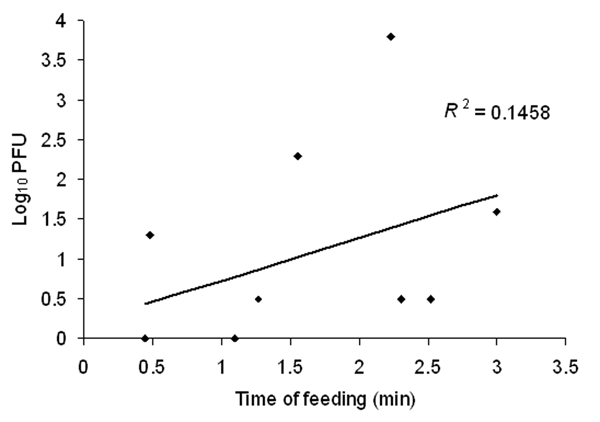Volume 12, Number 8—August 2006
Research
Venezuelan Equine Encephalitis Virus Transmission and Effect on Pathogenesis
Figure 2

Figure 2. Amount of Venezuelan equine encephalitis virus transmitted into a mouse tail versus the time required for complete engorgement. Only samples from mosquitoes that completely engorged and transmitted detectable virus were included.
Page created: December 09, 2011
Page updated: December 09, 2011
Page reviewed: December 09, 2011
The conclusions, findings, and opinions expressed by authors contributing to this journal do not necessarily reflect the official position of the U.S. Department of Health and Human Services, the Public Health Service, the Centers for Disease Control and Prevention, or the authors' affiliated institutions. Use of trade names is for identification only and does not imply endorsement by any of the groups named above.